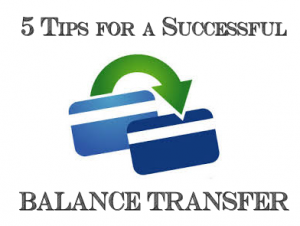 Transferring credit card balances can be a great way to pay down debt and save money! First, it simplifies your debt repayment. Instead of making three or four payments, you can consolidate your debt and make just one monthly payment. You can also save a bundle on interest by transferring your credit card balances to a card with a o% intro interest or low interest card.
Transferring credit card balances can be a great way to pay down debt and save money! First, it simplifies your debt repayment. Instead of making three or four payments, you can consolidate your debt and make just one monthly payment. You can also save a bundle on interest by transferring your credit card balances to a card with a o% intro interest or low interest card.
A balance transfer can backfire, though. Making even the simplest mistakes, such as not choosing the right card, can cause you to pay more than should after a balance transfer. To avoid ending up even deeper in debt, check out these tips for a successful balance transfer…
#1. Know your credit.
Having a good idea of your credit is the first step to a successful balance transfer. Consumers with solid credit histories and high credit scores will usually have the best chances of getting a low or no interest credit card for a balance transfer. Not knowing your credit score could result in getting declined for credit cards and paying with hard inquiries on your credit report.
#2. Choose the right balance transfer card.
Choosing the right card for your balance transfer is imperative. Chances are you’ll be shopping for a new card for your balance transfer. In this case, only apply for cards that you have a good chance of getting with your credit score. Ideally, you’ll want a 0% intro interest credit card for your balance transfer. These cards typically offer no interest for a specified period of time, usually around 12 months. However, some credit card companies offer longer no-interest promotional periods, like the Citi Diamond Preferred Card, which offers 21 months of 0% interest on a balance transfer.
#3. Read the fine print.
Always read the fine print before a balance transfer, whether you’re using a card you already have or shopping for a new card. Understand that some credit cards charge a balance transfer fee, such as 3% of the total balance transferred. Other cards, however, may wave this fee. You’ll also want to pay attention to exactly how long a promotional 0% interest offer lasts and how much your interest rate will be after this period ends.
#4. Calculate your payments.
Transferring a credit card balance to a no interest card give you a chance to pay off your debt with no additional interest. But, that’s only if you can get the debt paid off before a 0% interest promotional period ends. To do this, divide the amount of debt transferred by the number of months in the promotional period. For example, if you’re transferring $3,000 worth of debt to a card with a 0% interest promotional period for 12 months, you’d have to make a monthly payment of $250 to pay it off completely with no interest.
#5. Don’t add additional debt.
After your balance transfer, try not to add any additional debt, especially with the card that you’ve transferred your balances to! Don’t use your balance transfer card at all until it’s paid off; put it in a lock box, if necessary. If you continue to use your old credit cards, only buy what you already have the cash to pay for and pay them off completely each month.






